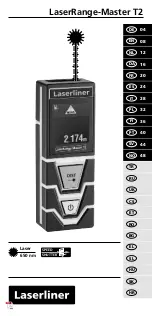
3-7
IM AQ7277-17EN
Before Programming
1
2
3
4
5
App
Index
3.4 Data
A data section comes after the header. A space must be included between the header
and the data. The data contains conditions and values. Data is classified as below.
Data
Description
<Decimal>
Value expressed as a decimal number
(Example: Average time
-> ACQuire:AVERage:TIME 60
)
<Distance><Time>
Physical value
<Wavelength><Loss>
(Example: Distance range
-> ACQuire:DRANge 500
)
<Register>
Register value expressed as either binary,octal, decimalor hexadecimal
(Example: Extended event register value
-> STATus:EESE #HFE
)
<Character data>
Specified character string (mnemonic). Can be selected from { }
(Example: Setup mode
-> ACQuire:SETTing{SIMPLE|DETAIL|WIZARD|MULTI}
)
<Boolean>
Indicates ON/OFF. Set to ON or OFF
(Example: Fault event display
-> ANALysis:FEDetection ON
)
<Character string data> Arbitrary character string
(Example: Comment to be saved
-> FILE:SAVe:COMMent "ABCDEF"
)
<Filename>
Gives the name of a file.
(Example: Name of file to be saved
-> FILE:SAVE:WAVeform:NAME "CASE1"
)
<Block data>
Arbitrary 8-bit data
(Example: Response to acquired waveform data
-> #800000010ABCDEFGHIJ
)
<Decimal>
<Decimal> indicates a value expressed as a decimalnumber, as shown in the table
below. Decimal valuesare given in the NR form specified in ANSI X3. 42-1975.
Symbol Description Example
<NR1>
Integer 125
–1 +1000
<NR2>
Fixed point number 125.0 –.90 +001.
<NR3>
Floating point number
125.0E+0 –9E–1 +.1E4
<NRf>
Any of the forms <NR1> to <NR3> is allowed.
• Decimal values which are sent from the controller tothis instrument can be sent in any
of the forms to<NR3>. In this case, <NRf> appears.
• For response messages which are returned from this instrument to the controller,
the form (<NR1> to<NR3> to be used) is determined by the query. Thesame form is
used, irrespective of whether the valueis large or small.
• In the case of <NR3>, the "+" after the "E" can be omitted, but the "–" cannot.
• If a value outside the setting range is entered, the value will be normalized so that it is
just inside the range.
• If the value has more than the significant number of digits, the value will be rounded.
















































